How to Reduce Transition Times in Triathlon
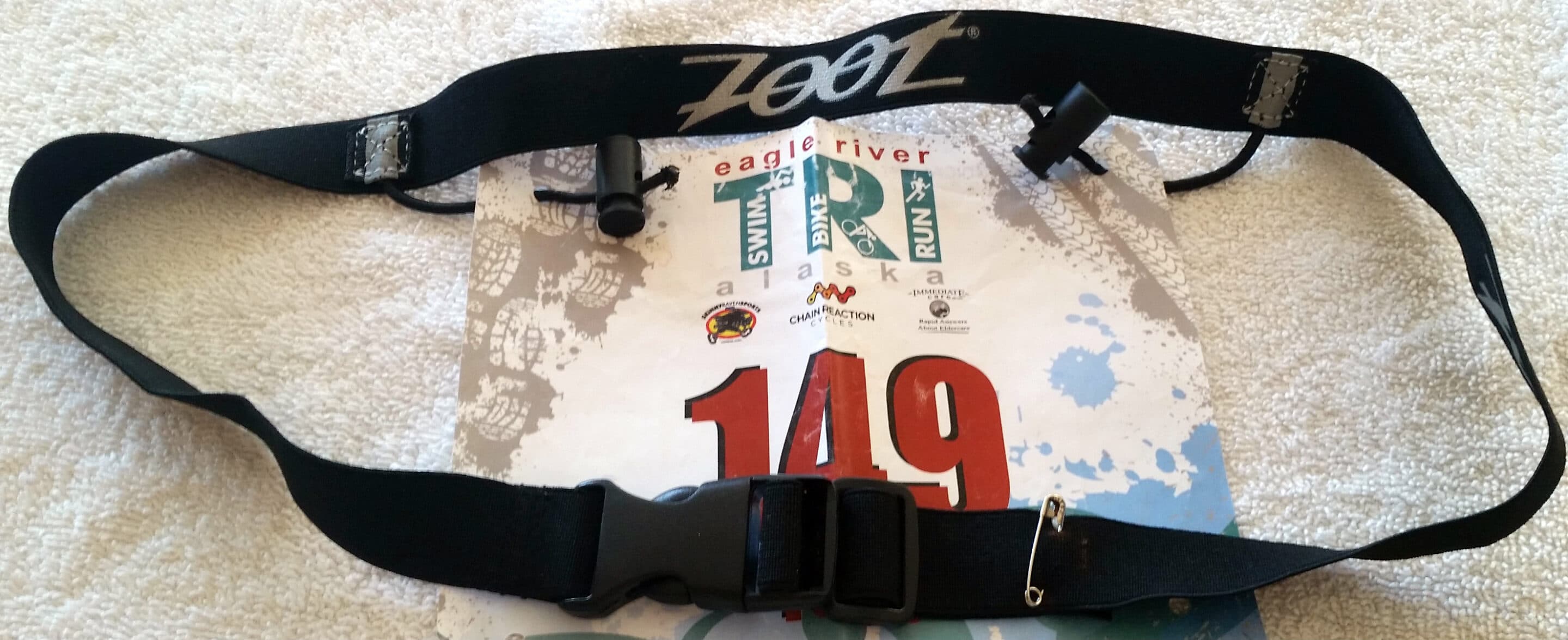
The transitions from swim to bike and from bike to run, referred to as T1 and T2 respectively, in a conventional triathlon contribute to the overall time of a triathlon. In fact, the shorter the race, the more important it is to have fast, efficient transitions.
Why Consider Transition Times?
Shaving a minute from your transition time is just as good as reducing your swim or bike or run time by a minute. From my experience and the advice of professional triathletes, this is one area in which quick improvements can be made.
My T1 and T2 times are generally quite good compared to other racers. Further improvement will come primarily by running faster to and from the transition area.
In this article, I will share lessons I have learned through participating in more than 25 sprint triathlons.
- Less is more. While I recommend being prepared for all kinds of weather (I keep a biking jacket in my backpack in case the weather suddenly turns cold) and for inevitable ‘equipment malfunctions’ (I keep spare goggles that have been pre-tested/pre-adjusted by me, spare bike tubes, a spare triathlon suit – just about one of everything), the extras should not be in the transition area.
- Put a brightly colored towel on the ground in your transition area. The towel will be useful in case you need to wipe the soles of your feet in either of the transitions. Many books and checklists suggest that you have a bucket for holding water to rinse your feet after running from the swim leg to the transition area. I did this for my first race and have never done so since. In most cases, the water that runs off my legs (pool swim) or out of my wetsuit (open water swim) rinses my feet. A couple of swipes of my soles on the towel, while putting on my glasses and helmet, removes the small amounts of remaining grass or sand.
- Arrive early at the race site and rehearse the paths into and out of transition that you will take during the race:
- from the swim exit to your specific transition space – can you see your bike? How many rows into the transition area is your space?
- from your transition space to the exit for the bike (called Bike Out)
- from the entrance after the bike leg (Bike In) to your transition space – how many rows in? by now, the transition area will look a lot different since at least some bikes will be gone and the area will be in general disarray.
- From the transition area to the exit for the run leg (Run Out).
I recently read the story of a senior triathlete’s experience with her first triathlon. Since she did not have her glasses after the run and had not rehearsed the route from the swim to the bike, she ended up taking a wrong route that lead to a dead-end. She wasted time having to retrace her steps back to the correct path.
- T1 (transition from swimming to biking)
- Glasses – open your glasses and set them lens down/bows up so that you can put your glasses on in a smooth motion before you start putting on your helmet.
- Bike helmet – It is easy to waste several seconds fiddling with the connection of the helmet. In setting up the transition area for a particular race, I rehearse putting on the helmet and connecting the straps. Reversing the action to make sure the connection will be made smoothly in most cases ensures a quick installation of your helmet.
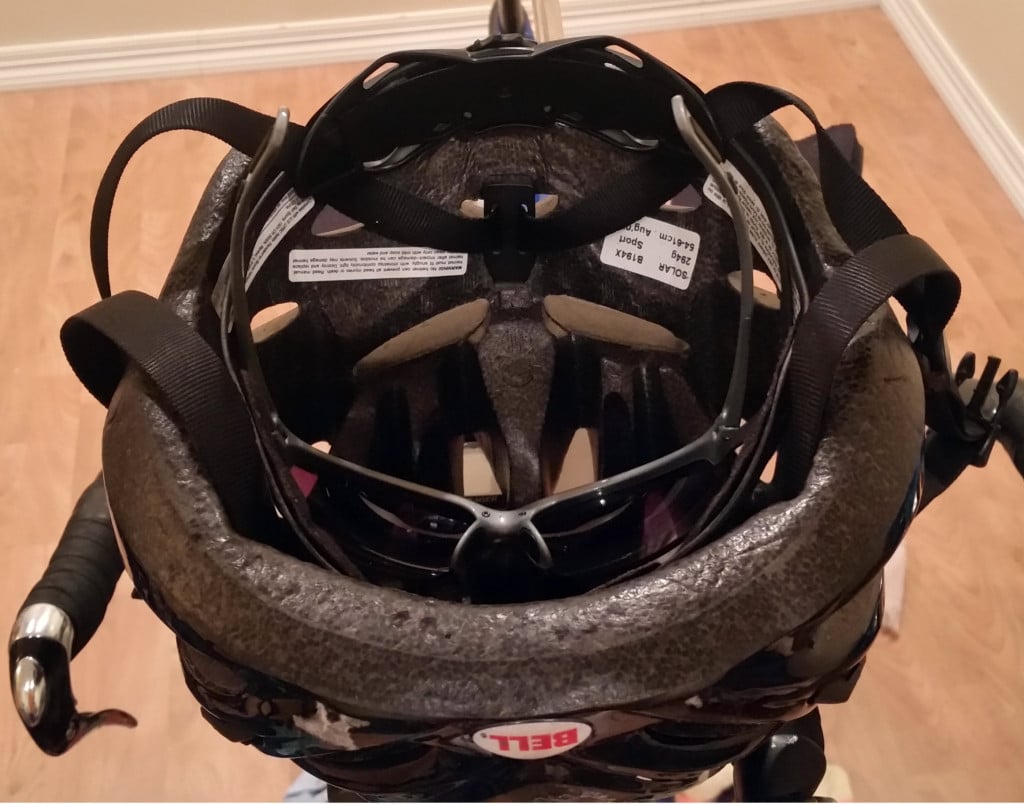
Bike helmet with straps and glasses in position for a fast swim to bike transition
Tip: It is a good idea to check your transition area setup as late as possible before the transition area closes and the race begins. As other racers, usually those who show up at the last minute, setup their areas, it is possible for your setup to be disturbed. I have arrived for the final check of my transition area to find my bike helmet and glasses on the ground.
-
- Bike without stockings if you are able, especially for short races – the time to put on stockings can be significant.
- Shoes – I leave my shoes clipped into the bike pedals and put my feet into them once I am riding – more on this in a future article.
- Make sure your bike is in a gear appropriate for the start of the bike leg. Will you immediately climb a steep hill? Make sure your bike is in a gear appropriate for this. Too often, I have seen racers ‘drop a chain’ by trying to downshift while climbing a steep hill.
- T2 (transition from biking to running)
- Race number – If the race involves an open water swim with a wetsuit, you can eliminate the need to add the race number for the run portion by wearing the race number through the entire race. (Note that in most races, your race number will be on your bike already so you are not required to have the race number for the run portion attached during other legs.) If, however, the race involves a pool swim, you have two main options:
- Swim in a swimsuit only and put on your shirt in T1; the race number can be pinned to your shirt before the race.
- Swim in your triathlon suit and strap on race number belt with the race number that was connected to the belt before the race. The race number belt can be clipped on while running in the transition for a faster transition. One lesson about the use of the race number belt that I learned the hard way was to secure the straps (see picture belo) with a safety pin after the straps have been adjusted for the proper fit. In my third race using a race number belt, the strap came loose while in transition and I had to take time in transition to re-thread the belt, without glasses and under the pressure of the race.
- Race number – If the race involves an open water swim with a wetsuit, you can eliminate the need to add the race number for the run portion by wearing the race number through the entire race. (Note that in most races, your race number will be on your bike already so you are not required to have the race number for the run portion attached during other legs.) If, however, the race involves a pool swim, you have two main options:
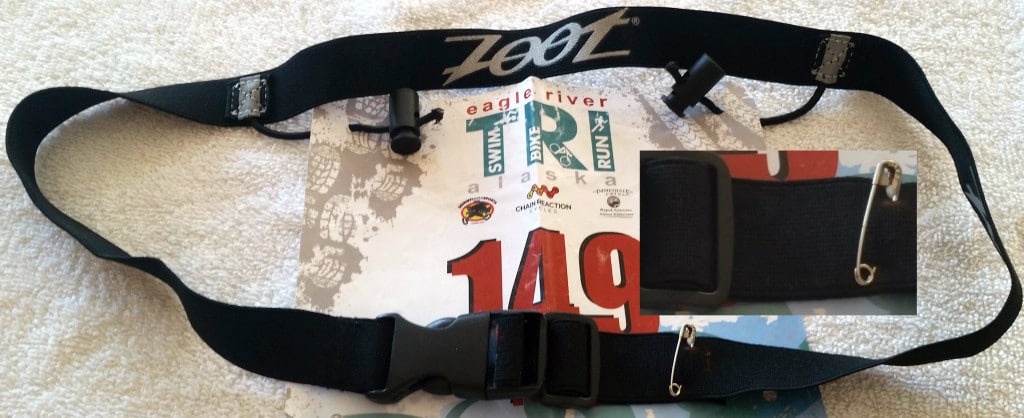
Race number belt showing safety pin (inset picture) to secure the strap once adjusted to the proper size
-
- Run without stockings if you are able, especially for short races – the time to put on stockings can be significant.
- Shoes
- To make the shoes easier to put on, I put petroleum jelly on the portion of the shoe that will be in contact with the Achilles tendon area so that (1) the heel slides into the shoe faster and easier and (2) there is less friction between the foot and shoe.
- To avoid the time to tie the shoes and prevent shoe strings from becoming untied, I use Lock Laces.
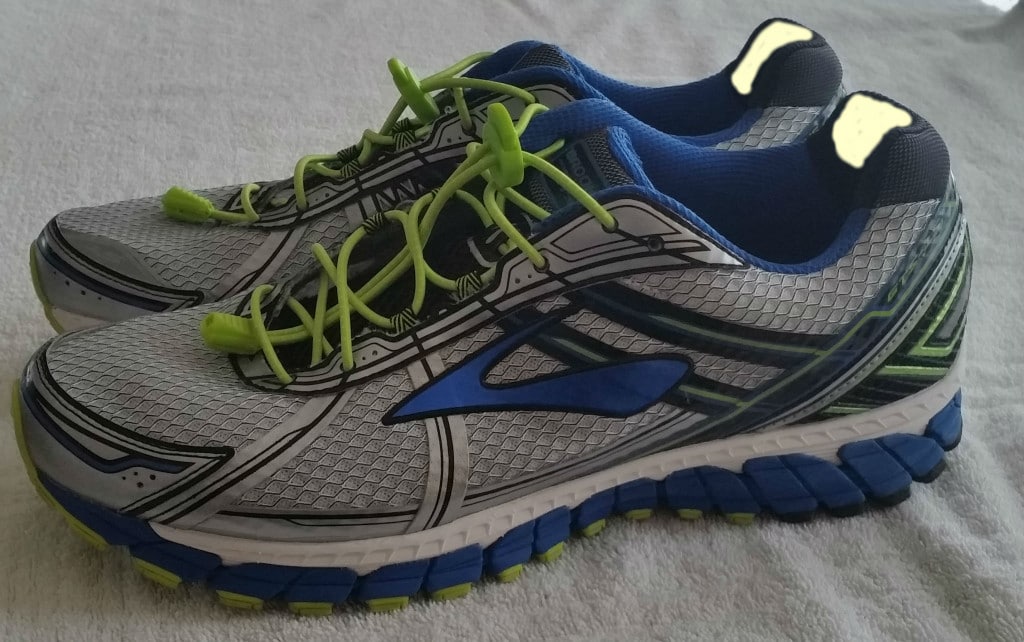
Running shoes with Green Apple colored Lock Lace (Elastic No Tie Shoelaces). Note the recommended location (white overlay) for adding petroleum jelly on both shoes before the race.
You may also want to confirm with race organizers that bike racks will be provided. I assumed that bike racks were provided for all races only to find that in one of them, racers were expected to provide their own racks. I learned this the morning of the race. Not having one, I had to improvise and set my bike upside down (see picture).
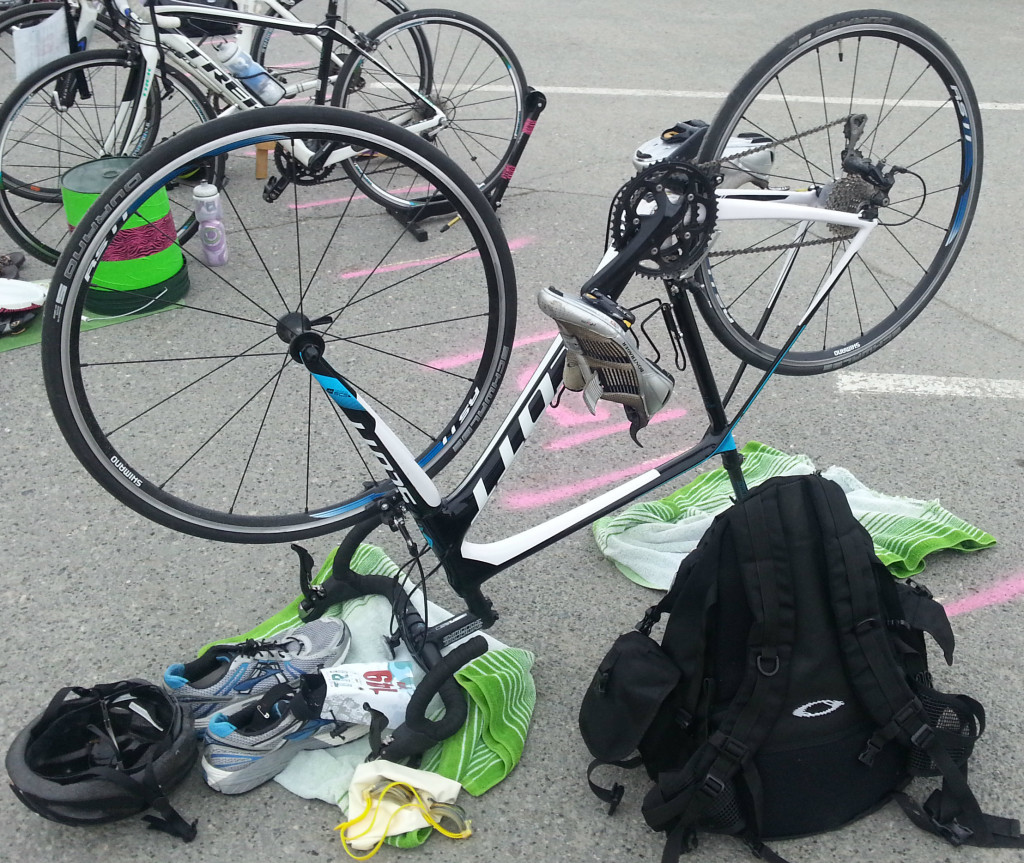
Transition area at Eagle River, Alaska triathlon. Each triathlete was responsible for their own bike rack.
Takeaway
The main takeaway from this article should be to practice the transitions before race day and rehearse them again on race day. You will be glad that you did.
